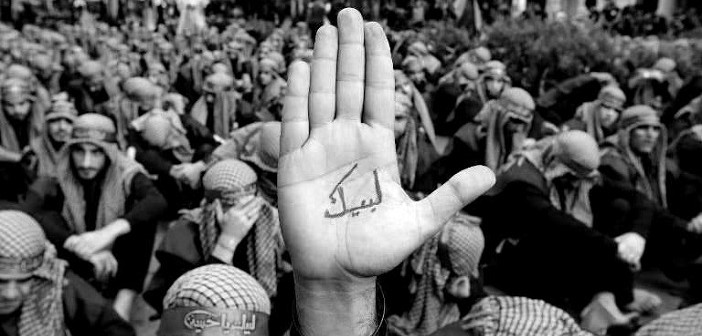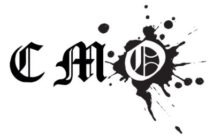Hezbollah is entering its worst era since its establishment in the eighties. Its involvement in Syria since the outset of the Syrian crisis in 2011 has drained its military capacity. Furthermore, the party’s hope for victory against ISIS seems further away than ever. This article advocates the idea that during times of war, a “strategic overextension” as described by Paul Kennedy in his book The Rise and Fall of Great Powers is a mistake that might drift Hezbollah further away from any chance of survival and continuity.
ملخّص
يمرّ حزب الله اليوم في أسوأ مراحله التاريخية، إذ منذ انغماسه في الحرب السورية في العام۲۰۱۱، تحت شعار حماية الحدود اللبنانية والمقامات الدينية الشيعية في سوريا، بات أمله في النصر بعيد المنال. يهدف هذا المقال إلى تبيان أن نظريّة بول كينيدي القائمة على”التمدّد الستراتيجي الزائد”، يمكن تطبيقها على حزب الله الذي غدا معلّقاً في الهواء بسبب المأزق الذي وقعت فيه حليفته وممولته الدولة الإيرانية. إذ على إيران أن تختار: إمّا الإلتزام بحدودها كونها دولة وستفالية، أو الإستمرار بمسارها كدولة جهادية تسعى إلى تعزيز الهلال الشيعي في الشرق الأوسط. نستطيع أن نستخلص أن مسلكية إيران في محيطها يتركّز على الشقّ الجهادي كونها تموّل الحوثيين في اليمن كما والشيعة في العراق بالإضافة إلى حزب الله اللبناني. وسياستها التوسّعية هذه قد تطيح بالهدف الذي وضعته منذ استلام الخمائني دولة إيران سياسياً ودينياً ورسم خريطة طريق لسياسته بإقامة هلال شيعي أوّله في لبنان مروراً بسوريا والعراق واليمن.
Hezbollah History and Ideology in a nutshell
The “Hezbollah Phenomenon”, or the Lebanese “Party of God”, emerged as an Islamic jihadi group in 1982. It is ideologically and politically connected to Iran.Many reasons played in favor of the creation of this group. First and foremost, political turmoil in Lebanon emanating from the 1975-1989 civil war and the Palestinian presence that exacerbated the country’s religious fragmentation. Second, the 1982 Israeli invasion “encouraged the Iranian-Syrian alliance to build a military organization to resist the Israeli occupation”(Lina Khatib et al., The Hezbollah Phenomenon, Politics and Communication). Third, “the 1979 Islamic Revolution in Iran increased the politicization of Lebanon’s Shiite population”. The latter started in the 1960s with Imam Musa al-Sadr “who believed that his fellow Shiites could overcome their marginalization, if they were able to seek and act according to their belief and religion”.
Lebanon is characterized by its multi-confessional political system, institutionalized by the 1943 National Pact, allowed Hezbollah to settle in and expand. However, it was not until the release of the 1985 manifesto, the “Open Letter”, that the ideology and political intentions of Hezbollah were made public. The image Hezbollah sought to spread was a replication of Iran’s wilayalal-faqih (the guardianship of the jurisprudence) and the creation of an Islamic State within Lebanon. This aim should be achieved by attacking the Lebanese political system to replace it with the rule of Islam. Its ultimate objective is to establish “a majoritarian democracy which would allow the party to reach a position of leadership from where it would be able to impose ideological hegemony”(Lina Khatib).Butthroughout the 1990s, Hezbollah worked on “transforming its religious movement into a mainstream political party”. With the assassination of Sunni PM Rafic Hariri on 14 February 2005, Hezbollah was openly confronted by the 2005 Cedar Revolutionand in July 2006, by Israel’s war against Hezbollah, that started with a disproportionate exhibit of force in Southern Lebanon, while “the outcome was inconclusive it did not prevent its party’s leader Hassan Nasrallah from describing it as a ‘Divine Victory’ ”, thus strengthening its position within the Lebanese Shiite constituency.
Up until today, Hezbollah has been benefitting from Lebanon’s internal political and religious divisions; however, with the Syrian crisis, its plan for expansion started to become reality under the banner of protecting Lebanon’s borders and defending religious Shiite sanctuaries in Syria.
Hezbollah Involvement in Syria
Hezbollah’s continuous combats in Syria since 2011, have increased its military and economic commitments and needs and exacerbated its human losses. According to credible sources close to Hezbollah, “the death toll from Hezbollah affiliates in Syria is above 1000 and around 3000 injured”. In addition to the fact that Iran, the party’s main source of funding and arms supply, is spreading its wings by supporting Shiite militias in different regions like the Houthis in Yemen, Shiites in Iraq and Hezbollah in Lebanon, in order to create what is called the Shiite Crescent. This “strategic overextension”comes at high risks and costs. Firstly, Iran’s domestic and foreign relations are not at ease today. With the nuclear deal being at the center of the debate, Iran has to make a choice: either to keep on supporting financially its proxy fighters at the expense of its population’s welfare or to accept the US deal which could boost Iran’s economy and save it from a financial collapse. However, accepting the American deal comes at high expenses because Khamenei will have to undergo considerable concessions such as giving up his expectations of Iran becoming a player in foreign relations (SaadMehio,Iran: The Naked Empire).
Hezbollah involvement in Syria came only after Iran’s leadership gave it the leeway and the means to fight in Syria, and not as a reflection of national feeling like Hezbollah leader, Nasrallah openly advertised. Another fact confirming that Hezbollah finds itself in a dilemma just like its Iranian counterparts, is that according to credible sources close to Hezbollah, “the party is restless, it is on the verge of deep divisions in its leadership, fundamental questions have been raised such as: what are we doing in Syria? Why are we defending the Alawite fraction?”These existential questions translate the dilemma Iran is facing with regard to its nuclear deal with the US. As Henry Kissinger indicated in his article, “A Path Out of the Middle East Collapse”,published on October 16, 2015, Iran has a choice: either going back to being a “Westphalian state within its established borders” or continuing its path towards being a jihadist revolutionary state that aims at establishing the Shia Crescent in the Middle East. Hence, Hezbollah is walking on thin ice: the more Iran sinks internally, the deeper the divisions within its ranks will become.
As stated in the beginning, a “strategic overextension” in times of war is the main reason for a party to lose its focus from the initial goal. Even the powerful Soviet Union was unable to further finance its empire and ended with a tragic collapse.
Hence, how could a third-world country like Iran go beyond what a powerful Empire once tried to achieve: expand beyond its capabilities?




2 Comments
THe article is very interesting and substantively supported. Shiite Islam is all about “strategic overextension” which translates culturally into national chauvinism or overwhelming ambition, to use dramatic argon, which had always been a a distinguishing characteristic of the Persian national identity. As early as the Abaasid State persians capitalized on the idea of loyalty to the Prophet’s folks to first topple the Umayyad reign and then penetrate into the Islamic State having fallen out of favour with Abassides, and to ultimately establish their own Shite anti -Sunni Samani State that had remained a thorn in the Abaasides flesh for centuries.Shiisim is a cultural and even racial expedient rather than a religion per se in much the same way as political Judaism is ( consider the historical ties between Shiism and Judaism initiated byAbdullah IBn Sabaa who stoked the rebellion against Othman Ibn Affan) . This could be one reason this “strategic overextension” is calculated and plays into the hands of Israel and US. The nuclear deal may be a move that ushers in an era of win-win co-operation between Iran , the West . There is lot more to be said about that and the cultural determinants of politics can prove useful in the analysis.
Je trouve que cet article est moins le fruit d’une chercheur que d’une militante politique anti-Hezbollah, ce qui serait tout à fait le droit d’un politique mais pas d’un chercheur qui doit fournir une analyse avec ses fondements!
Cette déception est d’autant plus grande qu’on y trouve toutes les charges que le camp opposé (bloc du “14 mars”) adresse au Hizobollah, accusations qui restent politiques et que l’article ne fait pas avancer d’un iota par un argumentaire rigoureux et des preuves: (i) l’accusation d’un engagement précoce en Syrie alors que la thèse opposée est celle de l’entrée en lice à l’occasion de la bataille d’Al Kuseir; (ii) le fait d’occulter (ou du moins de ne pas discuter) la thèse du Hizbollah expliquant l’engagement en Syrie par la menace encourue par les libanais côté syrien et la menace imminente des organisations jihadistes sur la population de la Bekaa…; (iii) l’accusation pour le bloc syro-iranien de s’inscrire dans la stratégie d’établissement d’un croissant chiite, thèse avancée – me semble-t-il _ il y a quelques années par le roi de Jordanie, accusation qui fait fi de raisons plus objectives qui sont celles de se défendre contre des mouvements d’éradication menaçant le Liban; (i) un autre élément non démontré est la thèse d’enlisement attribuée à l’intervention de l’Iran: quels sont les coûts matériels : humains et financiers? et est-ce qu’ils ne sont pas bien inférieurs à ce qui a été engagé par les puissances régionales concurrentes?
Bref, j’aurai préféré une analyse argumentée, voire chiffrée, à un plaidoyer politique que les hommes politiques savent mieux faire….